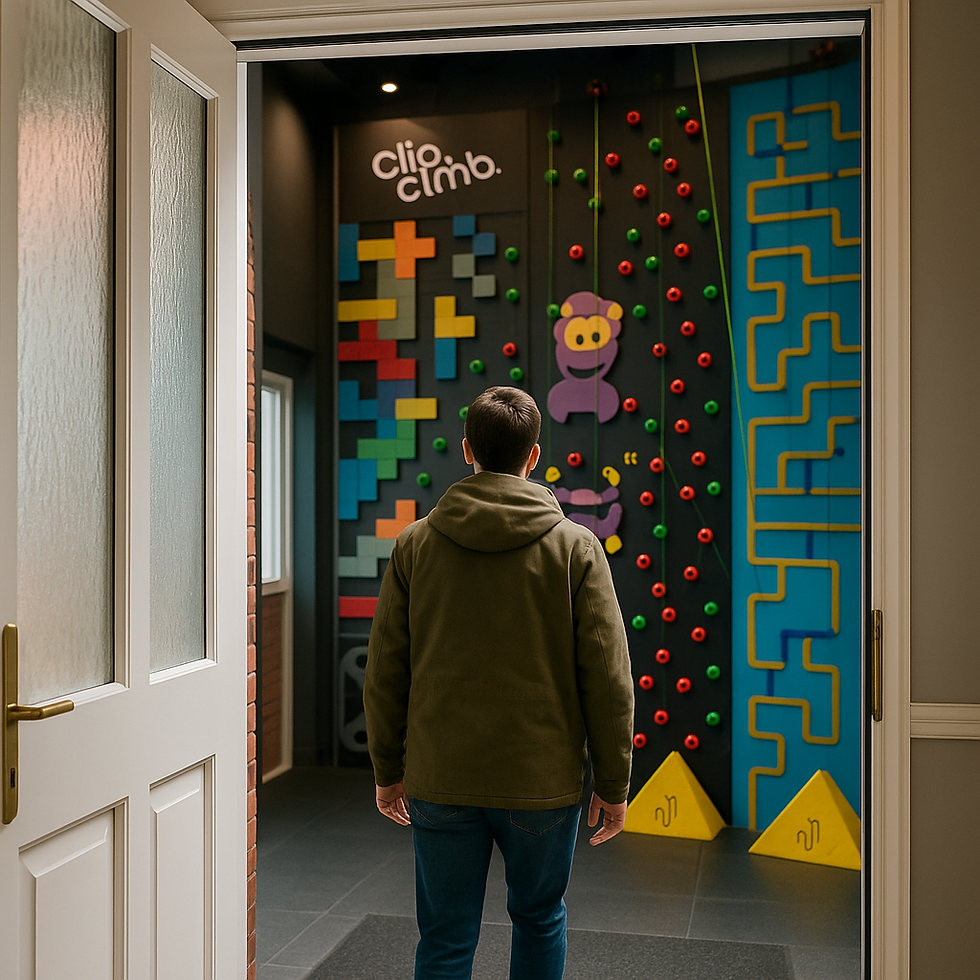Benchmarking for Indoor Climbing Gyms: The Data That Drives Growth
- Jez Tapping

- Oct 1
- 4 min read

By Jez Tapping, Indoor Climbing Industry Consultant
Most UK climbing walls track something - check-ins, memberships sold, maybe even café sales.
But too often, that data sits in a dusty corner of the CMS (Customer Management System), glanced at once a quarter (if that) and never acted on.
Historically, this wasn’t entirely our fault. The tools weren’t built for real business intelligence.
Pre-2024, systems like Rock Gym Pro (RGP) made basic reporting possible but offered limited flexibility, especially for multi-site operators or anyone wanting advanced cohort analysis.
Now, in the post-RGP era, modern UK-ready CMS/CRM (Customer Relationship Management) solutions like Capitan, Beta, Clava, and others put proper benchmarking within reach for any wall - whether you’re an independent bouldering facility in Cornwall or a multi-site operator in the North.
The real question isn’t how to track data - it’s what to track, what it means, and how to act on it.
Below, I’ll break down the most valuable benchmarks for UK climbing gym owners and operators, with definitions, practical examples from our market, and actions you can take this month.
Why Benchmarking Matters More Than Ever
The UK indoor climbing sector is still growing - the Association of British Climbing Walls (ABC) reports steady year-on-year openings, with bouldering-led facilities dominating recent launches. NICAS show unprecedented growth and competition is rising, but so is opportunity.
Benchmarking allows you to:
• Spot problems early (e.g., churn spiking at your Leeds site).
• Optimise programming & pricing based on actual demand patterns - not just staff impressions.
• Increase lifetime value by plugging retention leaks.
• Plan staffing and route-setting around real capacity data, especially in peak season.
Put simply: benchmarking replaces guesswork with growth work.
The Core UK Climbing Gym Benchmarks
1. New Users
Definition: First-time check-ins in a given week/month.
Why it matters: This is your pipeline for future members.
UK Example: A London wall saw new user numbers drop 17% in Q1 year-on-year. On investigation, it coincided with a local leisure centre launching a low-cost membership offer. The wall responded with a referral incentive for existing members, lifting new users by 9% within 6 weeks.
Action: Run a weekly new-user report and segment by acquisition channel if possible (walk-in, referral, digital ad).
2. Conversion Rate
Definition: % of first-timers who return within 14 days or buy a product within 30 days.
Formula: (Returning first-timers ÷ Total first-timers) × 100
Example: 420 first-timers → 147 return in 14 days = 35% conversion.
UK Example: A South West wall paired every beginner lesson with a discounted “30 Days Unlimited” offer. Their conversion rate from intro to recurring product jumped from 29% to 47%. Habit made = loss from promo recouped +208 % return within 12months.
Action:
• Give next-visit vouchers at the front desk.
• Have instructors hand off first-timers to staff at the café or shop to cross-sell.
3. Retention Rate & Attrition (Churn)
Retention: % of members still active after X months.
Attrition: % of members who cancel in a given month.
Why they matter: Retention is the biggest driver of profitability in any UK subscription model. In health & fitness, increasing retention by 5% can significantly lift profits - and climbing is no different.
UK Example: A Manchester bouldering centre spotted a drop in 3-month retention for new members. Post-visit surveys revealed overcrowding complaints mid-evening. They adjusted route-setting schedules and introduced member-only mornings; 3-month retention rose by 11 percentage points.
Action:
• Track retention in cohorts (new members in January = Jan cohort).
• Review churn reasons - if “too busy” is common, check your occupancy data.
4. Average Revenue Per Visit (ARPV)
Formula: Total revenue ÷ Total check-ins
Example: £186,000 ÷ 30,000 visits = £6.20 ARPV.
UK Example: A Midlands site increased café attachment rate from 18% to 24% by adding pre-order options in their app. Result? An extra £0.26 per visit, worth ~£9,000/year in extra revenue at that site.
5. Occupancy & Utilisation Rates
Check ins ÷ total potential capacity (casual).
Booked on a session ÷ capacity by session (coaching).
Why they matter:
• Identify under-used weekday windows for new programmes (e.g., parent-and- toddler mornings).
• Manage peak congestion for member satisfaction.
• Price premium time slots strategically.
UK Example: A multi-site operator in the North used utilisation data to introduce “Lunchtime Climb” sessions at a reduced rate - filling previously quiet 12–2pm slots and adding £1,800/month in off-peak revenue.
6. Year-on-Year Comparisons
Don’t just look at this month vs. last month - compare same week number vs. last year to account for seasonal swings and holiday shifts.
UK Example: A coastal wall saw a 15% dip in August year-on-year - explained by unusually long, hot spells pulling members outdoors. They planned an indoor summer bouldering league for the next year, mitigating the drop.
7. Weather-Adjusted Trends
We all know a sunny Saturday can empty the wall. The question is: by how much?
Example: In June 2024, one UK bouldering centre’s four sunny Saturdays (>22°C, no rain) averaged 22% fewer check-ins than the monthly mean.
Action:
• Pull historic Met Office data and join it with visits.
• Flag “sunny” and “wet” days in your reports.
• Pre-plan promotions or outdoor product bundles when hot spells are forecast/kick off.
Need Help Building Your Benchmarking System?
I work with UK climbing gyms to:
• Audit existing CRM/CMS setups.
• Design reporting frameworks.
• Train managers to use data to make commercial decisions.
• Set up dashbaords to make tracking and reporting easier.
Whether you’re a single-site bouldering wall or a multi-site roped facility, I can help you turn your data into higher revenue, better retention, and smoother operations.
Get in touch to book a free discovery call.





Comments